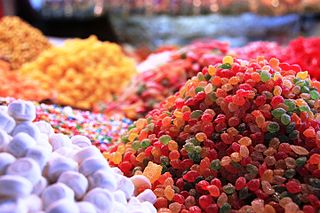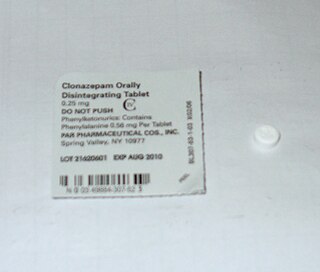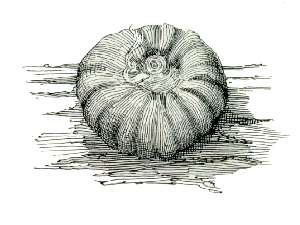Related Research Articles

Lac is the resinous secretion of a number of species of lac insects, of which the most commonly cultivated is Kerria lacca.

Shellac is a resin secreted by the female lac bug on trees in the forests of India and Thailand. It is processed and sold as dry flakes and dissolved in alcohol to make liquid shellac, which is used as a brush-on colorant, food glaze and wood finish. Shellac functions as a tough natural primer, sanding sealant, tannin-blocker, odour-blocker, stain, and high-gloss varnish. Shellac was once used in electrical applications as it possesses good insulation qualities and it seals out moisture. Phonograph and 78 rpm gramophone records were made of it until they were replaced by vinyl long-playing records from 1948 onwards.

Waxes are a diverse class of organic compounds that are lipophilic, malleable solids near ambient temperatures. They include higher alkanes and lipids, typically with melting points above about 40 °C (104 °F), melting to give low viscosity liquids. Waxes are insoluble in water but soluble in nonpolar organic solvents such as hexane, benzene and chloroform. Natural waxes of different types are produced by plants and animals and occur in petroleum.

In polymer chemistry and materials science, resin is a solid or highly viscous substance of plant or synthetic origin that is typically convertible into polymers. Resins are usually mixtures of organic compounds. This article focuses on naturally occurring resins.

Candy, also called sweets or lollies, is a confection that features sugar as a principal ingredient. The category, called sugar confectionery, encompasses any sweet confection, including chocolate, chewing gum, and sugar candy. Vegetables, fruit, or nuts which have been glazed and coated with sugar are said to be candied.

Jelly beans are small bean shaped sugar candies with soft candy shells and thick gel interiors. The confection is primarily made of sugar and sold in a wide variety of colors and flavors.

Varnish is a clear transparent hard protective coating or film. It is not a stain. It usually has a yellowish shade from the manufacturing process and materials used, but it may also be pigmented as desired, and is sold commercially in various shades.

Lacquer is a type of hard and usually shiny coating or finish applied to materials such as wood or metal. It is most often made from resin extracted from trees and waxes and has been in use since antiquity. The term originates from the Sanskrit word lākshā (लाक्षा) for lac bug, representing the number one hundred thousand (100,000), used as wood finish in ancient India and neighbouring areas.

Carmine – also called cochineal, cochineal extract, crimson lake, or carmine lake – is a pigment of a bright-red color obtained from the aluminium complex derived from carminic acid. Specific code names for the pigment include natural red 4, C.I. 75470, or E120. Carmine is also a general term for a particularly deep-red color.
An excipient is a substance formulated alongside the active ingredient of a medication, included for the purpose of long-term stabilization, bulking up solid formulations that contain potent active ingredients in small amounts, or to confer a therapeutic enhancement on the active ingredient in the final dosage form, such as facilitating drug absorption, reducing viscosity, or enhancing solubility. Excipients can also be useful in the manufacturing process, to aid in the handling of the active substance concerns such as by facilitating powder flowability or non-stick properties, in addition to aiding in vitro stability such as prevention of denaturation or aggregation over the expected shelf life. The selection of appropriate excipients also depends upon the route of administration and the dosage form, as well as the active ingredient and other factors. A comprehensive classification system based on structure-property-application relationships has been proposed for excipients used in parenteral medications.

Sugar candy is any candy whose primary ingredient is sugar. The main types of sugar candies are hard candies, fondants, caramels, jellies, and nougats. In British English, this broad category of sugar candies is called sweets, and the name candy or sugar-candy is used only for hard candies that are nearly solid sugar.
Zein is a class of prolamine protein found in maize (corn). It is usually manufactured as a powder from corn gluten meal. Zein is one of the best understood plant proteins. Pure zein is clear, odorless, tasteless, hard, water-insoluble, and edible, and it has a variety of industrial and food uses.
An enteric coating is a polymer barrier applied to oral medication that prevents its dissolution or disintegration in the gastric environment. This helps by either protecting drugs from the acidity of the stomach, the stomach from the detrimental effects of the drug, or to release the drug after the stomach. Some drugs are unstable at the pH of gastric acid and need to be protected from degradation. Enteric coating is also an effective method to obtain drug targeting. Other drugs such as some anthelmintics may need to reach a high concentration in a specific part of the intestine. Enteric coating may also be used during studies as a research tool to determine drug absorption. Enteric-coated medications pertain to the "delayed action" dosage form category. Tablets, mini-tablets, pellets and granules are the most common enteric-coated dosage forms.

Magnesium stearate is the chemical compound with the formula Mg(C
18H
35O
2)
2. It is a soap, consisting of salt containing two equivalents of stearate (the anion of stearic acid) and one magnesium cation (Mg2+). Magnesium stearate is a white, water-insoluble powder. Its applications exploit its softness, insolubility in many solvents, and low toxicity. It is used as a release agent and as a component or lubricant in the production of pharmaceuticals and cosmetics.

An animal product is any material derived from the body of an animal. Examples are fat, flesh, blood, milk, eggs, and lesser known products, such as isinglass and rennet.
Chocolate is a food product made from roasted and ground cocoa pods mixed with fat and powdered sugar to produce a solid confectionery. There are several types of chocolate, classified primarily according to the proportion of cocoa and fat content used in a particular formulation.

An orally disintegrating tablet or orally dissolving tablet (ODT) is a drug dosage form available for a limited range of over-the-counter (OTC) and prescription medications. ODTs differ from traditional tablets in that they are designed to be dissolved on the tongue rather than swallowed whole. The ODT serves as an alternative dosage form for patients who experience dysphagia or for where compliance is a known issue and therefore an easier dosage form to take ensures that medication is taken. Common among all age groups, dysphagia is observed in about 35% of the general population, as well as up to 60% of the elderly institutionalized population and 18-22% of all patients in long-term care facilities ODTs may have a faster onset of effect than tablets or capsules, and have the convenience of a tablet that can be taken without water. During the last decade, ODTs have become available in a variety of therapeutic markets, both OTC and by prescription.

A plastic bottle is a bottle constructed from high-density or low density plastic. Plastic bottles are typically used to store liquids such as water, soft drinks, motor oil, cooking oil, medicine, shampoo, milk, and ink. The size ranges from very small bottles to large carboys. Consumer blow molded containers often have integral handles or are shaped to facilitate grasping.

Kerriidae is a family of scale insects, commonly known as lac insects or lac scales. Some members of the genera Metatachardia, Tachardiella, Austrotacharidia, Afrotachardina, Tachardina, and Kerria are raised for commercial purposes, though the most commonly cultivated species is Kerria lacca. These insects secrete a waxy resin that is harvested and converted commercially into lac and shellac, used in various dyes, cosmetics, food glazes, wood finishing varnishes and polishes.
Animal products in pharmaceuticals play a role as both active and inactive ingredients, the latter including binders, carriers, stabilizers, fillers, and colorants. Animals and their products may also be used in pharmaceutical production without being included in the product itself.
References
- 1 2 Flinn, Angel (15 Aug 2011). "Shellac & Food Glaze". Gentle World. Retrieved 3 July 2014.
- ↑ Blech, Zushe Yosef (2004). Kosher Food Production. Blackwell Publishing. p. 275. ISBN 0-8138-2570-9.
Many candies are polished with "confectioner's glaze." otherwise known as "resinous glaze." The base of this material is shellac, which is derived from the lac insect. Although most Kashrus organizations accept this material, some do not.
- ↑ Adams, Cecil (1992). "The Straight Dope: Is some candy coated with beetle juice?". Creative Loafing Media, Inc. Retrieved 2009-02-02.
- ↑ Dresdner, Michael (13 Jan 2003). "Shellac Bugs?". Woodworker's Journal. Retrieved 3 July 2014.
- 1 2 Smolinske, Susan C. (1992). Handbook of Food, Drug, and Cosmetic Excipients. CRC Press. p. 347. ISBN 0-8493-3585-X.
- 1 2 3 Yacoubou, Jeanne (30 Nov 2010). "Q & A on Shellac". Vegetarian Resource Group. Retrieved 3 July 2014.
- ↑ "FDA Inactive Ingredients Database". US Food and Drug Administration. Retrieved 23 August 2013.
- ↑ Klahorst, Suanne J. (September 1999). "Credible Edible Films". Food Product Design. Retrieved 2009-02-02.